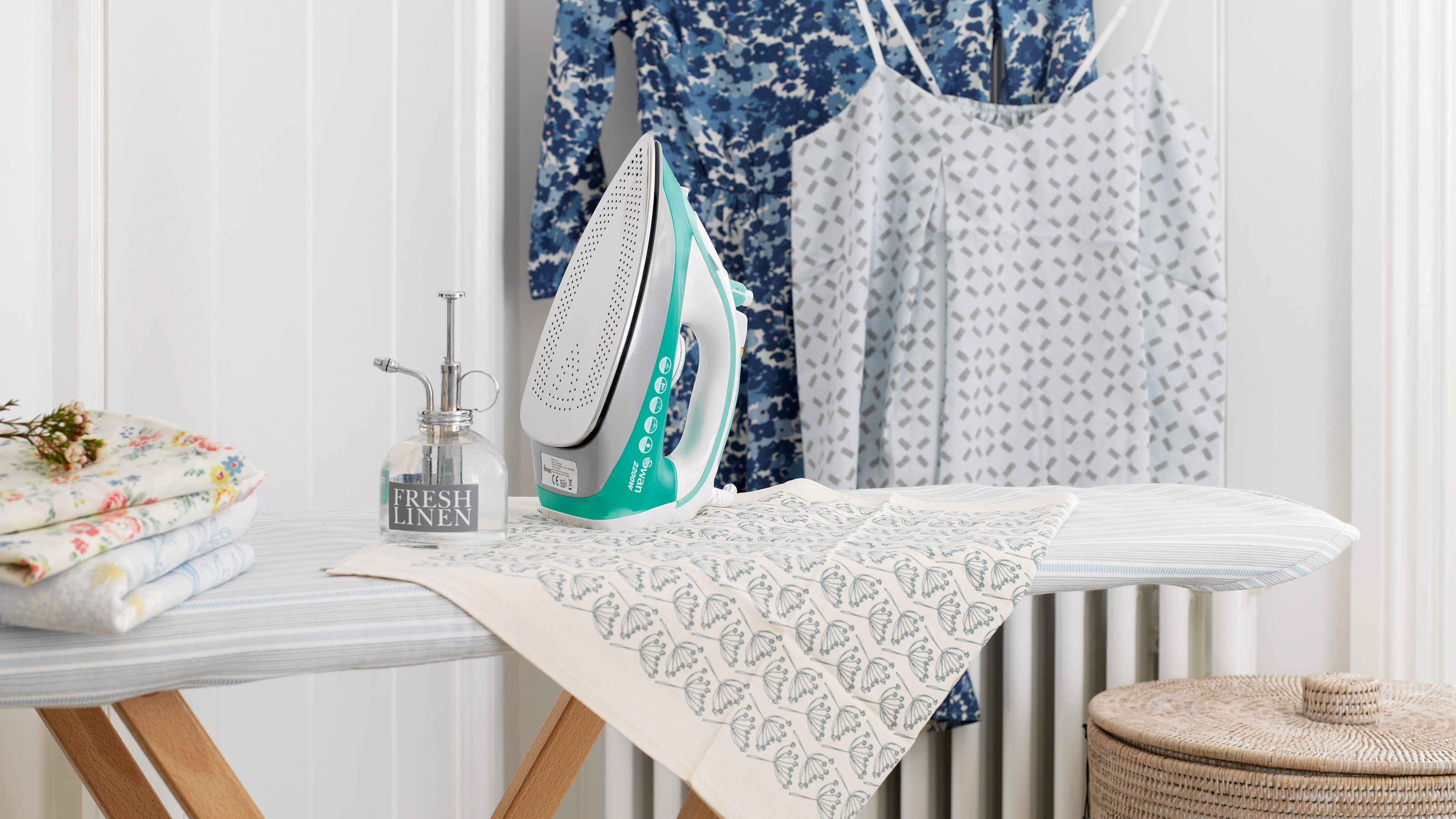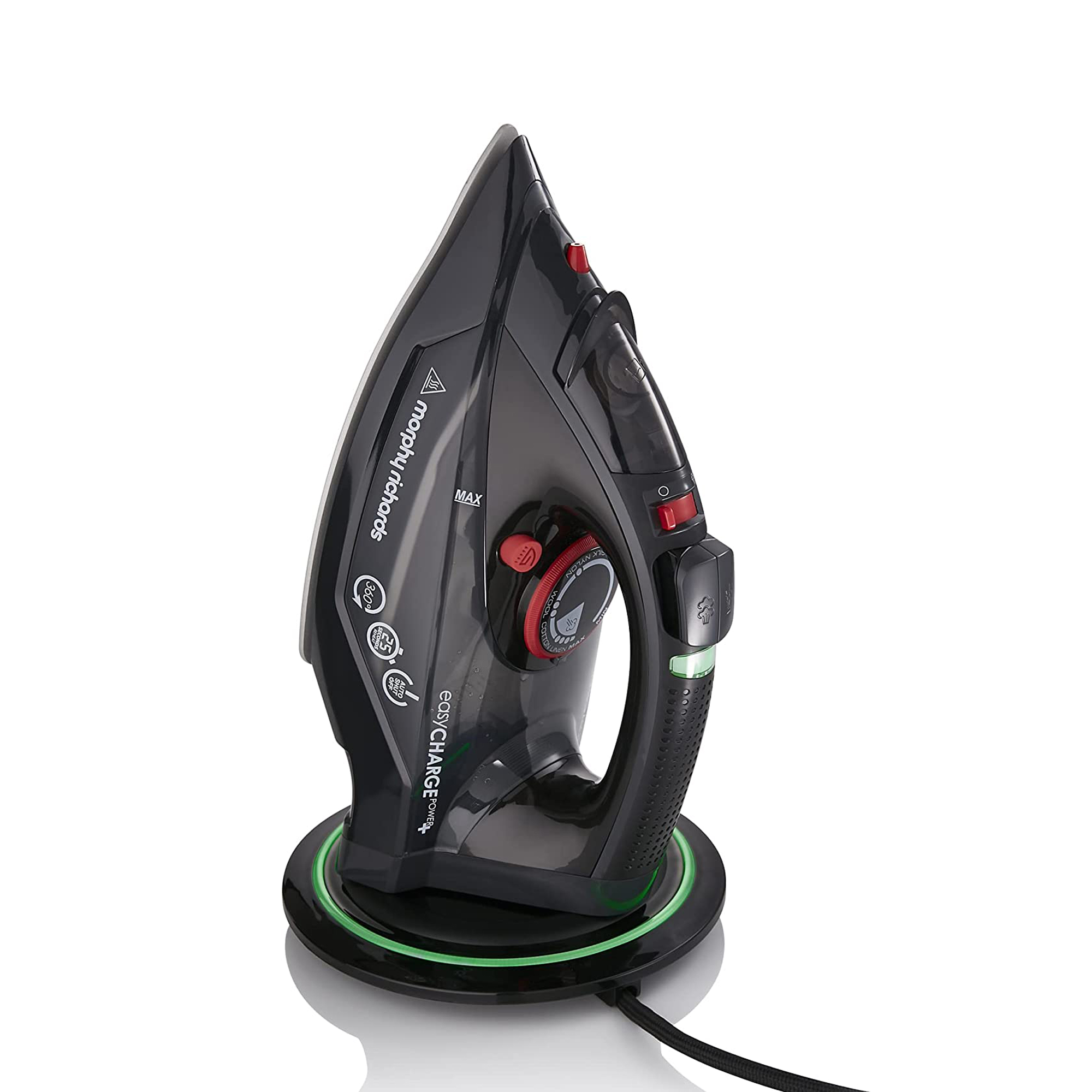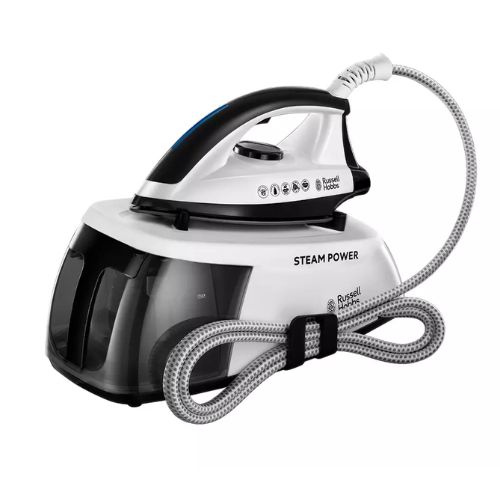Is ceramic or stainless steel better for irons? The pros and cons of the two soleplate materials
Which iron plate lessons the laundry load more efficiently?

When buying an iron, among many other choices you'll need to make, you'll need to consider if you should opt for ceramic or a stainless steel soleplate.
The soleplate is the base of an iron, and as the main point of contact between it and your clothes, it is an important decision to get right when choosing the best iron for you. The two most popular materials used to make iron soleplates are ceramic and steel, but which is best for the ironing tasks in your home?
When choosing which soleplate to team your best ironing board up with first assess how you press your clothes.'When faced with the choice between either iron, it’s a good idea to know what you want from your ironing,' agrees Thea Whyte, an iron expert at AO.com.
We've put together the pros and cons of ceramic and steel soleplates, so you can decide which is best for you..
Ceramic iron soleplates pros and cons
Ceramic soleplates are made of a ceramic that is coated. Irons with ceramic soleplates are known for smooth gliding functionality, distributing heat evenly and being gentle on fabrics and are non-stick so will not catch.
Pros
- Smooth gliding
- Non-stick
- Less prone to scratching
- Less prone to corrosion
Cons
- More maintenance required
- Can be more fragile than stainless steel
- May crack or chip over time
- More expensive
'Ceramic plated irons are known for their smooth glide over your fabrics, and distribute its heat evenly, which can help result in smoother, wrinkle-free clothes with little effort,' explains Thea Whyte.

The iron with a ceramic plate was awarded 5 stars by our reviewer for working smoothly over fabrics and it's lighting fast charging base
Stainless steel soleplates pros and cons
Stainless steel iron soleplates are made of stainless steel that is polished to a smooth finish. Stainless steel soleplates are very durable and heat up quickly. But, they are not non-stick so are more likely to snag material.
Sign up to our newsletter for style inspiration, real homes, project and garden advice and shopping know-how
Pros
- Durable
- Scratch resistant
- Fast heating
- Less expensive
- Easy to clean
Cons
- Not non-stick
- May not heat evenly
'Stainless-steel plated irons are a durable option that heat up quickly and are considered champions for their ability to hold and distribute heat effectively,' says Thea.
Final verdict
To conclude, when asking the question is ceramic or stainless steel better for irons? The answer is not necessarily as it comes down to personal choice depending on ironing needs.
'If you’re looking to sort your load of washing of everyday shirts, socks and dresses quickly, perhaps a ceramic plated iron would be the best option,' concludes Thea.
'If tackling tougher wrinkles in your jeans and jackets is more important, then a stainless-steel iron may offer better results.'
Whether you choose a ceramic or stainless steel soleplate, a good-quality base will make ironing more straightforward and comfortable leaving you with crisp and crease-free fabrics. Knowing how to clean an iron the right way, will keep it in top condition for as long as possible.
FAQS
What type of iron soleplates are there?
There six materials used for iron soleplates including aluminium, stainless steel, ceramic, titanium, Palladium and Non-stick coating. But overall these materials are split into three key types a ceramic soleplate, a stainless steel soleplate and a non-stick soleplate.
Each material has its own unique characteristics, so do bear this in mind when reading the product specifications for irons when choosing the best option for you.
Rachel Homer has been in the interiors publishing industry for over 15 years. Starting as a Style Assistant on Inspirations Magazine, she has since worked for some of the UK’s leading interiors magazines and websites. After starting a family, she moved from being a content editor at Idealhome.co.uk to be a digital freelancer and hasn’t looked back.


